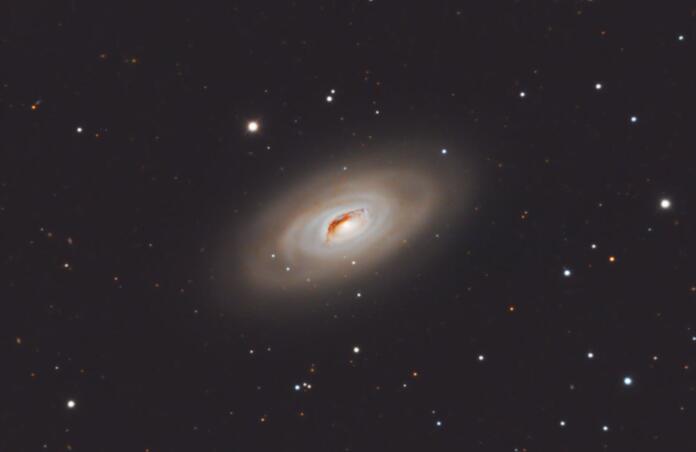Using a General Checklist When Imaging for the First Time

I recently brought a good friend of mine to the dark side after he’d been strictly an observer for quite a while, similar to how I’d been assimilated several years ago. He already had much of the basic equipment and only needed to obtain specific equipment for imaging; cameras (imaging and guiding), a guide scope and cables. Lots of cables.
I walked him through how to set everything up at home to test and confirm everything would work as expected before taking it to a remote dark sky site. When I went through this process for the first time, I had a friend to walk me through a similar process. I took a lot of notes on the process as we went along and eventually I developed a very specific checklist to use to make sure I would have everything covered every time I went to image deep sky objects.
When I run across someone new to imaging with their equipment and they’d like some assistance in getting going, I’ve shared my general checklist with them to help them organize the areas they should be concerned with so they’re positioned to have as successful a night as possible. As is with my checklist, your specific checklist will depend on the particular equipment you work with, but it can all be summarized into a general list of things that you’ll need to be concerned with.
The First Step - Finding the right spot to set up. This will determine just how well your evening of imaging will go. You want to take the time to select a good site; one that has a clear view of the sky in all or almost all directions. Stay as far away from any obstructions as you can, especially if they can generate heat or light (buildings, RVs, campfires). And while there are electronic polar scopes that make polar alignments less troublesome, I make sure that the spot I’m going to use has a clear view of the north celestial pole since I’m in the northern hemisphere (if you’re in the southern hemisphere, then have a clear sight of the Southern Celestial Pole). This will require the use of a compass unless there is a landmark you can use that clearly identifies where Polaris (or Sigma Octantis) will be.
The Second Step - Setting the equipment up. Get your tripod in place on the spot you chose and making sure the tripod is properly leveled. You need to use a good level tool to work with to complete this task. Attaching all the main equipment is next - the mount, the optical tube, the guide scope, imaging and guide cameras with any adapters and all the cables connecting everything. One task I did during my initial test assembly was to label the ends of my cables with where they connected. This made it a lot easier for me to know where cables connected. Last, set up the power sources you’re going to use for your equipment. I use deep cycle marine batteries and I need to make sure they’re carefully placed with my equipment as well as the solar cells to keep them charged. That said, if you’re lucky enough to have access to AC power, make sure you have it safely routed to your equipment.
The Third Step - Balancing the mount and equipment. This is a critical step; you really do not want the mount to work any harder than it needs to. If the mount and your load aren’t balanced, you will have a lot of problems with guiding when you’re attempting to image targets. My balancing process is to balance the mount and equipment in the Declination axis first. After that is complete, then I balance in the Right Ascension axis. Pay particular attention to where your counterweights are on the counterweight bar when you achieve balance. If the weights are very close to the top of the counterweight bar (near the optical tube) when balanced in RA, you may have too many counterweights. If the counterweights are near the end of the counterweight bar when balanced in RA, you may not have enough counterweights.While you’re balancing the equipment, make note of how the cables are traveling. Be sure they don’t snag on anything as your optical tube is moving around in all directions. Cable management is very important; a night of imaging can be completely ruined if a cable gets snagged on your equipment and gets disconnected or snapped off.
The Fourth Step - Collimation. This step is applicable if you use a Newtonian Reflector like I do. I have no experience with a catadioptric or Ritchey-Chretien optical tube but this step may or may not be relevant for them. As I use a newtonian reflector for imaging, collimating is mandatory. This is where you will confirm the alignment of the primary and secondary mirrors and make any adjustments needed to align those mirrors. I use a laser collimator which makes the process about as easy as it can be.
f you have these general steps covered, then you should be set up to power everything up at nightfall and begin your work in a good position. As I said at the beginning, this is a very general checklist; your specific equipment may have special requirements to complete that you’ll need to insert into this list. As I’m writing this list of general steps to get set up, it makes me very appreciative of the work the staff at Telescope Live must go through daily (and nightly) to keep the equipment maintained in high operational readiness for all of us. We really don’t have to think about any of this.
Stay safe, have a lot of fun if you decide to go after these targets, get your neighbors to turn off their lights at night and convince them to join in the fun….
---
Image Credits -NGC 4826, The Black Eye Galaxy; Telescope Live 1-Click Bundled Observation LRGB Data using SPA-2 & Processed in PixInsight
This blog post was originally published in our Telescope Live Community.
The Community represents Telescope Live's virtual living room, where people exchange ideas and questions around astrophotography and astronomy.
Join the conversation now to find out more about astrophotography and to improve your observation and post-processing skills!
